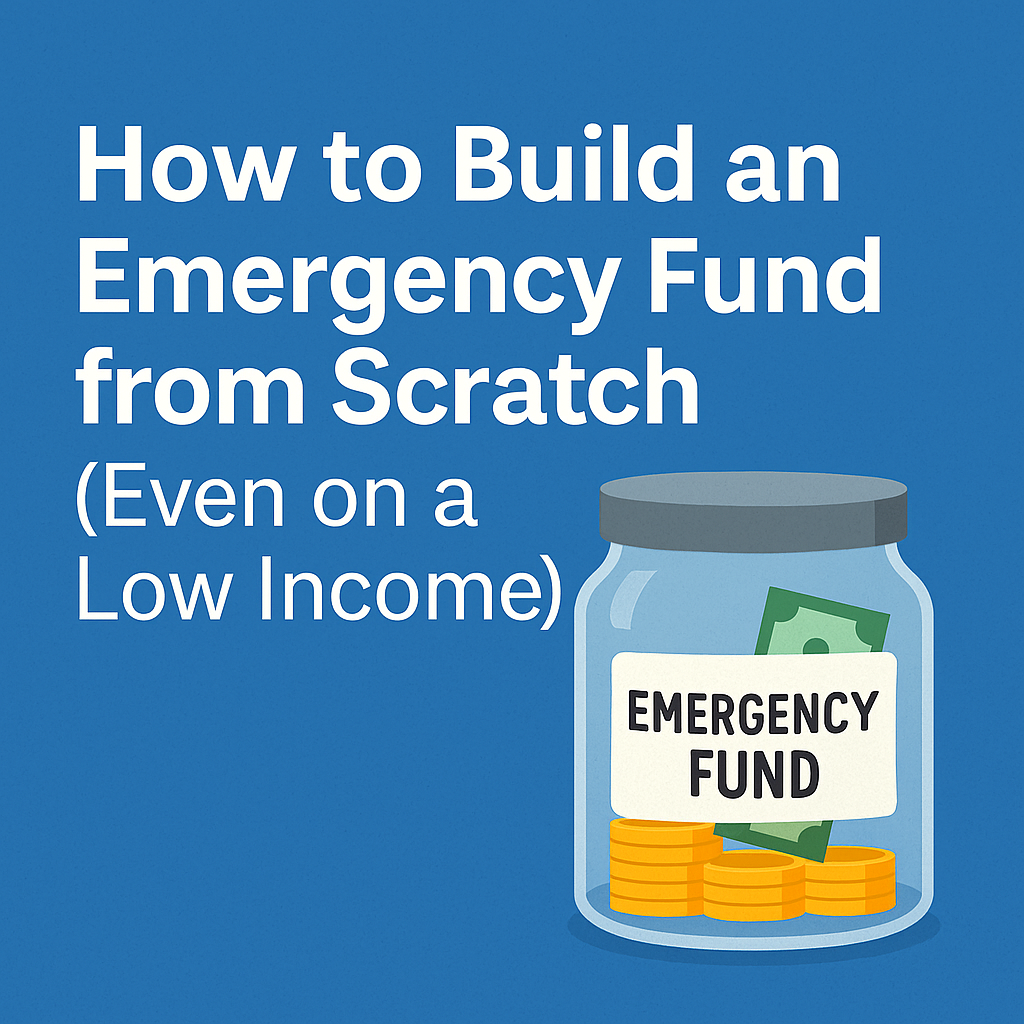Feeling like saving money is impossible when you’re barely making ends meet? You’re not alone. Here’s how to build a safety net(Emergency Fund) — even if your budget is tight.
🧠 What Is an Emergency Fund (And Why You Need One)?
An emergency fund is your financial life jacket. It’s money set aside to cover unexpected expenses — like medical bills, job loss, or a sudden repair — so you don’t end up in debt or stress when life throws a curveball.
Why it matters:
- Protects you from relying on credit cards or loans
- Gives peace of mind during emergencies
- Helps break the cycle of paycheck-to-paycheck living
Even if you earn ₹15,000/month (or $500), you can start building your emergency fund. Slowly, but surely.
💸 How Much Should You Save?
📌 Rule of Thumb:
- 3–6 months’ worth of expenses is ideal.
- If you’re just starting: aim for ₹10,000–₹25,000 ($100–$300) as a first mini-goal.
Start small and build up. Even ₹500 or $10 a week matters.
🧩 Step-by-Step: How to Build an Emergency Fund from Scratch
1. ✅ Know Your Monthly Essentials
Track how much you spend on:
- Rent
- Groceries
- Utilities
- Medications
- Transport
Use apps like Walnut (India) or Mint (global) to simplify tracking.
2. 🎯 Set a Realistic Savings Goal
Don’t aim too high at first. Start with a micro-goal, like:
“I will save ₹1000 ($12) this month for emergencies.”
Visualize it. Write it down. Celebrate when you hit it!
3. 💼 Open a Separate Savings Account
Keep your emergency fund separate from your main account. This helps reduce the temptation to spend it.
Look for:
- Zero minimum balance
- Good interest rate
- Instant transfers
✅ Recommended:
4. 🔁 Automate Your Savings
Set up an auto-debit of even ₹100/week ($2–$5). Small, consistent steps grow big over time.
Automation removes willpower from the equation.
5. 📦 Cut Small, Hidden Expenses
You don’t need to cut everything. Just start here:
- Unused subscriptions
- Frequent takeouts or food delivery
- Daily chai/coffee runs (save ₹30/day = ₹900/month!)
Reallocate those small wins into your savings.
6. 💰 Use Side Hustles for Boosts
Whatever you earn on the side — set a percentage for emergencies.
Great zero-investment ideas:
📝 Check our blog: 10 Zero-Investment Side Hustles in 2025
7. 📦 Treat It Like a Bill You Must Pay
Saving isn’t optional — it’s your personal safety tax. Add it to your monthly “must-pay” list like rent and groceries.
8. 🚫 Don’t Use It (Unless It’s Truly an Emergency)
Emergencies = hospital visits, job loss, urgent repairs.
Not emergencies = shopping sales, vacations, new gadgets.
Tip: Use a sticky note in your savings app labeled “Break only in case of emergency.”
🙌 Real Stories: Small Steps = Big Change
Anjali, Mumbai – Income: ₹18,000/month
“I started with ₹500/month. In 10 months, I saved ₹7,000. It helped when my scooter broke down unexpectedly.”
Jatin, Delhi – Part-time gig worker
“I saved 20% of my freelance income into a separate PayTM wallet. In 6 months, I built a ₹15,000 emergency fund.”
🔁 Recap: Emergency Fund Action Plan
| Step | Action |
|---|---|
| 1️⃣ | Track monthly essential expenses |
| 2️⃣ | Set a micro goal (₹1000/$10 first) |
| 3️⃣ | Use a separate savings account |
| 4️⃣ | Automate small deposits weekly |
| 5️⃣ | Cut and redirect small expenses |
| 6️⃣ | Boost with side hustle income |
| 7️⃣ | Treat saving like a monthly bill |
| 8️⃣ | Protect it — use only for true emergencies |
🚀 Final Thought
Starting an emergency fund might feel tough on a low income, but it’s 100% doable. Start small, stay consistent, and you’ll feel the power of having financial breathing space.
💬 Have a tip or story? Share it in the comments!

